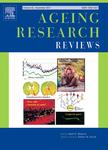版权所有:内蒙古大学图书馆 技术提供:维普资讯• 智图
内蒙古自治区呼和浩特市赛罕区大学西街235号 邮编: 010021

作者机构:Univ Palermo Dept Internal Med Geriatr Sect Palermo Italy IRCCS Ist Ric Farmacol Mario Negri Milan Italy Univ Modena & Reggio Emilia Clin & Expt Med PhD Program Modena Azienda USL Sud Est Toscana Grosseto Italy Anglia Ruskin Univ Ctr Hlth Performance & Wellbeing Cambridge England Univ Kore Sch Med Enna Italy Univ Bari Aldo Moro Dept Interdisciplinary Med Bari Italy Univ Bari Aldo Moro EO Galliera Hosp Dept Geriatr Care Orthogeriatr & Rehabil Geriatr Unit Bari Italy Univ Palermo Dept Internal Med & Geriatr Geriatr Unit Via Vespro 141 I-90127 Palermo Italy
出 版 物:《AGEING RESEARCH REVIEWS》 (Ageing Res. Rev.)
年 卷 期:2024年第98卷
页 面:102345-102345页
核心收录:
学科分类:0710[理学-生物学] 1002[医学-临床医学] 07[理学] 09[农学]
主 题:Prognosis Accuracy Precision Systematic review Meta -analysis Older people
摘 要:Objective: To explore the accuracy and precision of prognostic tools used in older people in predicting mortality, hospitalization, and nursing home admission across different settings and timings. Design: Systematic review and meta -analysis of prospective and retrospective studies. Data sources: A systematic search from database inception until 01st February 2023 was run in Medline, Embase, Cinhal, Cochrane Library. Eligibility criteria: Studies were eligible if they reported accuracy (area under the curve [AUC]) and/or precision (C -index) for the prognostic index in relation to any of the following outcomes: mortality, hospitalization, and nursing home admission. Data extraction and synthesis: Two independent reviewers extracted data. Data were pooled using a random effects model. The risk of bias was assessed with the Quality in Prognosis Studies (QUIPS) tool. If more than three studies for the same setting and time were available, a meta -analysis was performed and evaluated using the GRADE tool;other data were reported descriptively. Results: Among 16,082 studies initially considered, 159 studies with a total of 2398856 older people (mean age: 78 years) were included. The majority of the studies was carried out in hospital or medical wards. In the community setting, only two tools (Health Assessment Tool and the Multidimensional Prognostic Index, MPI) had good precision for long-term mortality. In emergency department setting, Barthel Index had an excellent accuracy in predicting short-term mortality. In medical wards, the MPI had a moderate certainty of the evidence in predicting short-term mortality (13 studies;11,787 patients;AUC =0.79 and 4 studies;3915 patients;Cindex =0.82). Similar findings were available for MPI when considering longer follow-up periods. When considering nursing home and surgical wards, the literature was limited. The risk of bias was generally acceptable;observed bias was mainly owing to attrition and confounding. Conclusions: Severa